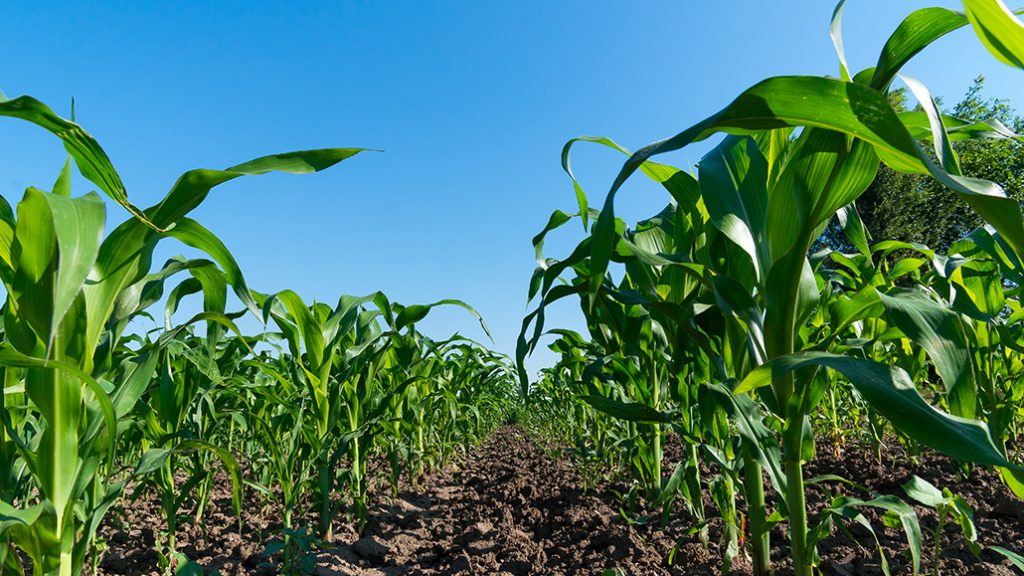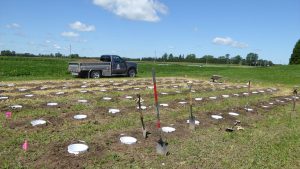Split nitrogen application on corn
U.S. STUDIES QUESTION BENEFITS

SEVERAL FACTORS — INCLUDING the drive to improve yields, pressures to use less nitrogen (N) or use it more effectively, the availability of high clearance equipment — are prompting more U.S. grain producers to try split applications of N on corn.
A growing body of research is becoming available in the U.S. on whether split application boosts yields and if it is economically justified.
This winter’s North Central Soil Fertility Conference featured four research projects on split application, including a collaborative project by scientists from Minnesota, Indiana, Nebraska, North Dakota, Missouri, Wisconsin, Illinois, and Iowa.
| ONTARIO APPLICATION According to Greg Stewart, agronomy lead at Maizex Seeds Inc., the American research into split N application supports research and field observations from across Ontario.Some of Stewart’s key findings based on his own work and observations in Ontario include: 1. In soils that that have good N holding capacity (i.e. loams with good drainage) the advantages to late N applications are quite small. 2. On soils that are more prone to N loss (i.e sands or heavy clays) late applications show more potential for significant yield improvements especially in years when May and June have above average rainfall. 3. Although the idea of spoon feeding N to corn over the season with multiple applications is appealing, application costs and relatively small yield gains make the economics difficult. 4. Growers hoping to make gains with late nitrogen need to be conservative with planting time N rates, i.e. 135 lbs N/acre up front leaves you some room for seasonally adjusted optimal late N rates; applying 190 lbs N/acre near planting with the hopes that some additional late N will push yields higher seems less likely to be profitable. Stewart recently wrote a more in-depth report on N application for Ontario Grain Farmer, and that article can be accessed through the magazine archive at ontariograinfarmer.ca. • |
MULTI-STATE STUDY
The eight-state study compared corn yields and nitrogen recovery efficiency across 49 sites over three years, looking at crop performance under three nitrogen regimens (single N application at or close to planting, 40 pounds near planting plus 40 pounds sidedressing at the V9 growth stage, and 80 pounds near planting plus 80 pounds sidedressing at V9).
Scientists looked at N uptake at corn tasseling, uptake at physiological maturity, and grain yield and found that the timing of N application affected uptake at only 18 sites.
Overall, the results suggested that more fertilization at planting may affect early N uptake without affecting season-long accumulation and that N uptake may be delayed by split applications. In addition, N timing affected grain yields in only 24% of sites: a single N application yielded higher in eight sites and yielded lower in 12 sites.
Where timing produced yield differences, coarse-textured soils had consistently better yields with split application, but researchers concluded that split N application offered limited ability to improve productivity in fine- and medium-textured soils.
KANSAS
At Kansas State University, another project looked at the combined effect of fungicide applications and foliar N application on yield and grain N and attempted to assess the value of foliar N application during the VT — R1 (tasseling and silking) growth stages.
The results, based on using UAN (urea-ammonium nitrate) and foliar N treatments in six locations with urea-formaldehyde/ triazone, suggest that the combination of split N fertilizer application in combination with a late foliar N application plus a fungicide can contribute to maximize yields, but researchers suggest that results may vary from year to year, citing the way yield response to fungicides can vary based on growing conditions.
ILLINOIS
A set of field trials by University of Illinois researchers compared a range of N rates from zero to 250 pounds per acre in fields where corn followed soybeans. Nitrogen was applied as a UAN solution either at planting or hand-applied at the plants’ base at tasseling. At each application level, N was applied at 50 pounds per acre on the late split sites, with the remainder applied at planting. Results were averaged over four trials.
The economically optimum rate was 135 pounds per acre for N applied at planting and 138 pounds per acre for the late-split plots.
In three corn-on-corn plots, the average optimum rate was 151 pounds per acre for both early and late-split applications and average yield was unchanged.
Researchers found that while late applied N was taken up and produced additional yield at lower N rates, it did not increase economic returns because of higher application costs.
“It appears that late-split N should not be adopted as a routine practice on productive soils that have shown their capacity to supply the crop with nitrogen from fertilizer applied early in the season,” their study concluded.
NO-TILLED INTO SOYBEANS
Finally, a Kansas State University study also looked at the effects of late split N application during corn’s late vegetative growth stage, using four locations in 2016 and in 2017 where corn was no-tilled into soybean residue. The test sites included both dry land and irrigated plots.
Plants were fertilized with UAN at crop growth stages V4 and R1 at five different N rates, applied either shortly after planting or split applied (60% at planting followed by 40% at R1).
Tests of ear-leaves, whole plants, and grain yields found no yield differences between fertilizer treatments at three locations, and no statistically significant differences at the fourth location. •
























